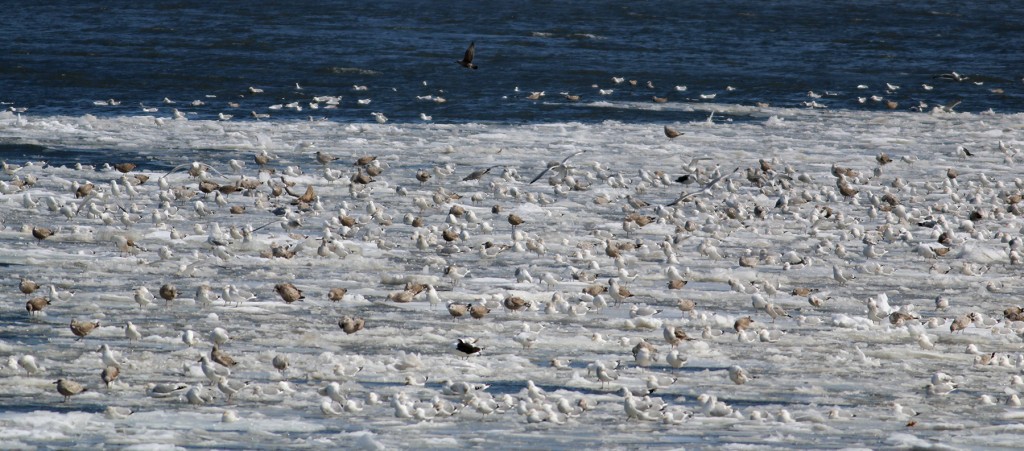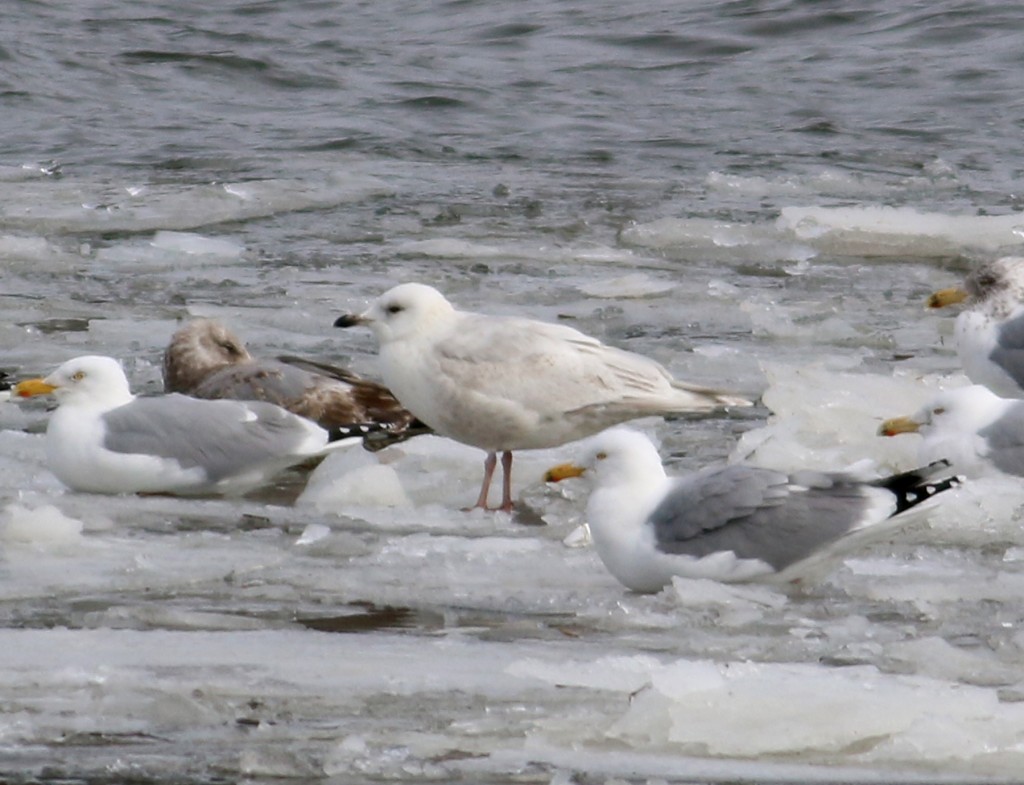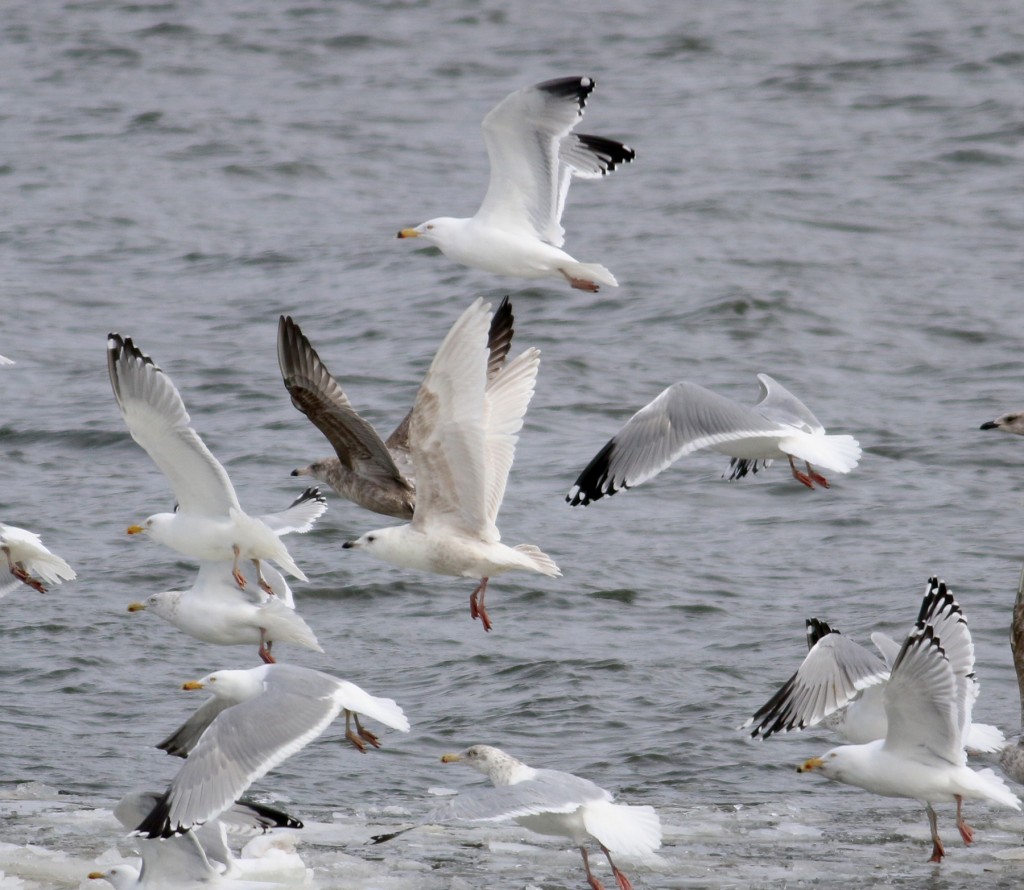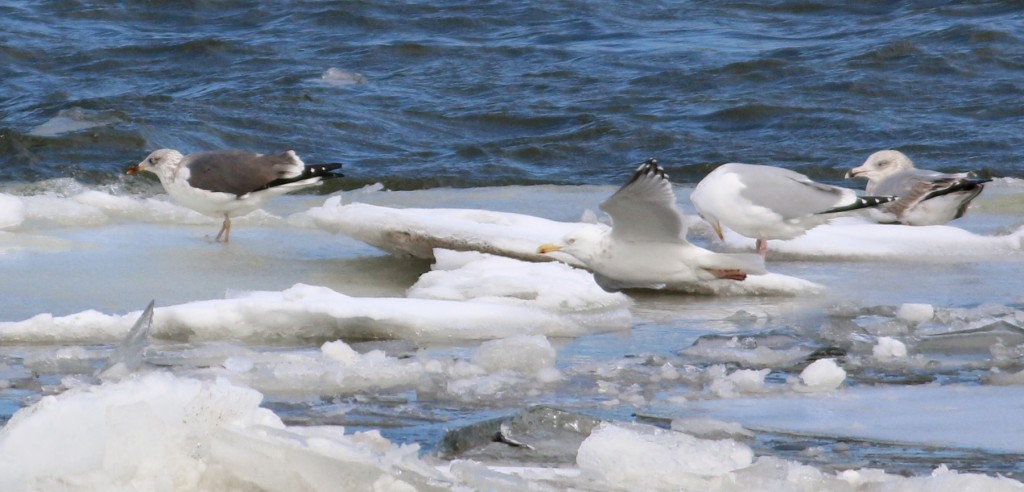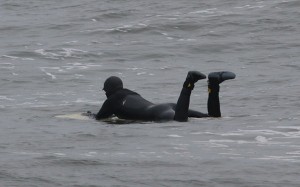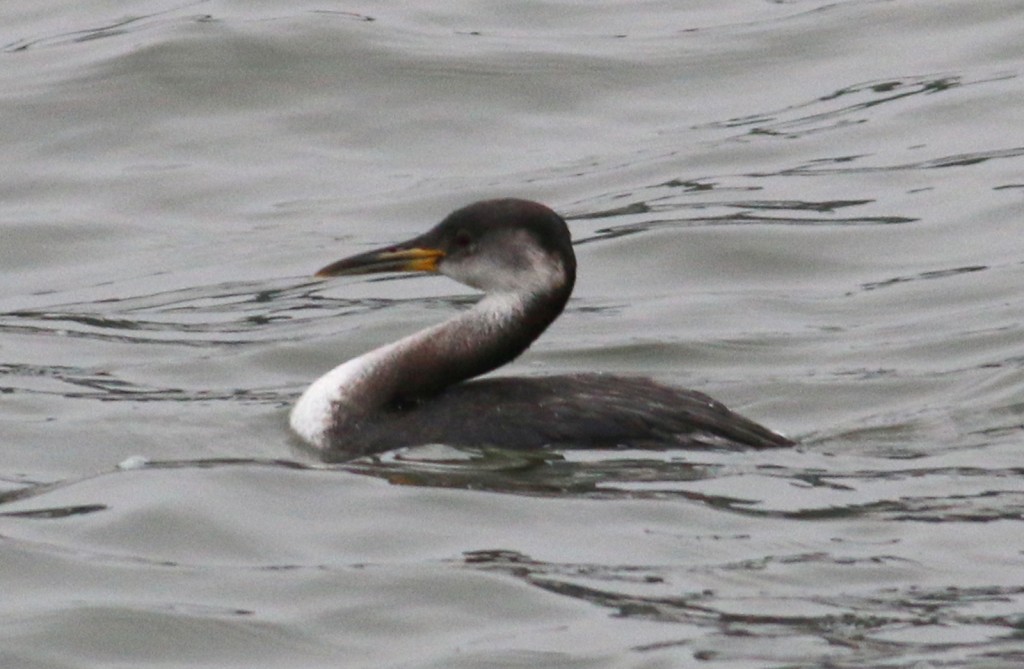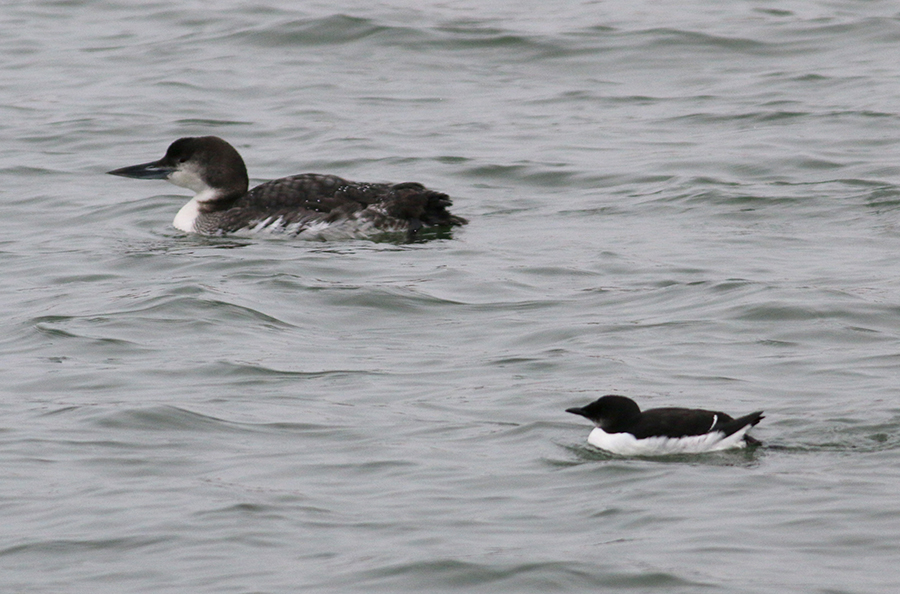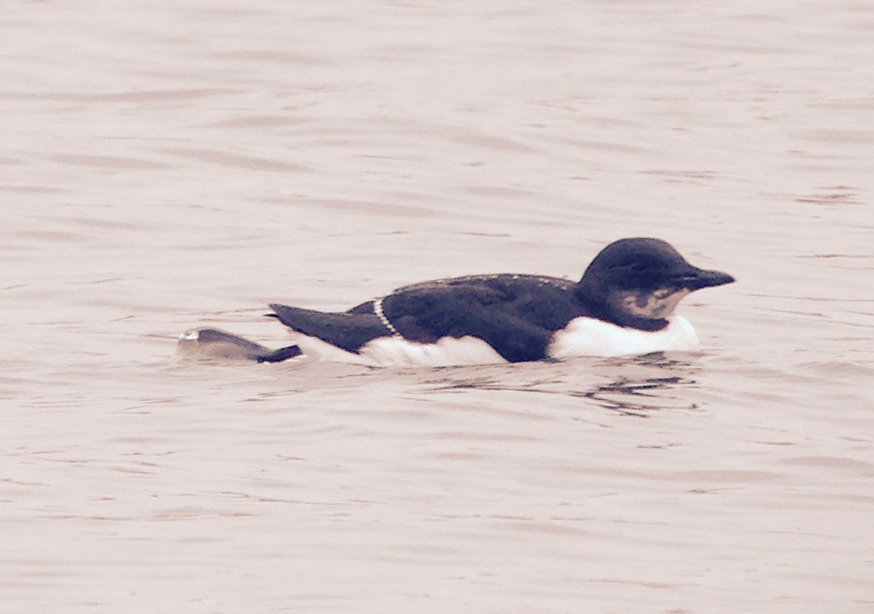This was the week I was waiting for. But first here’s a little background. Eleven years ago I went on an amazing trip to Alaska, where I took great photos of Mt. McKinley, my first-ever salmon, breaching Humpback Whales, and a series of birds that I do not expect to ever see again unless I travel back to Alaska. When I came back home all of those photos were stolen. (I know…awwww) One of the birds that was in that collection was Bohemian Waxwing, a bird that is actually possible to see here in NJ, but only rarely. In fact, the NJ Birds Records Committee only lists 16 accepted records since 1962. But this month they were being sighted on Long Island, then at Sandy Hook in northern NJ. I figured that within a week they would head further down the coast, most likely appearing at nearby Island Beach State Park. This was going to be my week to photograph this bird again.
Today brought winds from the northeast, so the window of opportunity was open. I headed to Island Beach despite light snow and the uncomfortable combination of 25 degree temperature and 15 mph winds. The strategy was to drive the main road slowly or walk some of the trails, looking for Cedar Waxwing or Robin flocks, hoping that a Bohemian would be mixed in. The first sighting of the day was a familiar face at IBSP, one of the resident Red Foxes, following me down the Reed’s Road trail.
The birds were mostly hunkered down due to the wind and the cold, so any sightings were welcomed. I stopped and waited when I located decent Robin flocks at lots 3, 11, and 14, and occasionally found a few Ceder Waxwings mixed in, but alas, no Bohemians.

Cedar Waxwing, frontal view. Note the white undertail coverts and yellow belly that distinguish them from Bohemian Waxwing.
After driving the 8.3 miles of the main road, then all the way back I was about to give up, but summoning up all the optimism (or desperation) of a determined birder, I decided to try the same strategy again. I drove back out, focusing on lots 3, 11, and 14, then turned around and again stopped by 14, 11, and then 3. When I reached lot 3 again, I saw a photographer, Kevin Knutsen, aiming a big lens into a tree as he called out ‘Bohemian’.
I joined him, and indeed, within 2 or 3 minutes a Bohemian Waxwing flew to the top of a nearby tree. Notice the rusty undertail coverts and gray belly compared to the white coverts and yellow belly of the Cedar Waxwing.
That was a nice documentation photo, but I was hoping for better. I positioned myself in the road and a few short minutes later the bird flew into the nearest cedar, just above eye level for a stellar photo op. If only all birds were so cooperative.
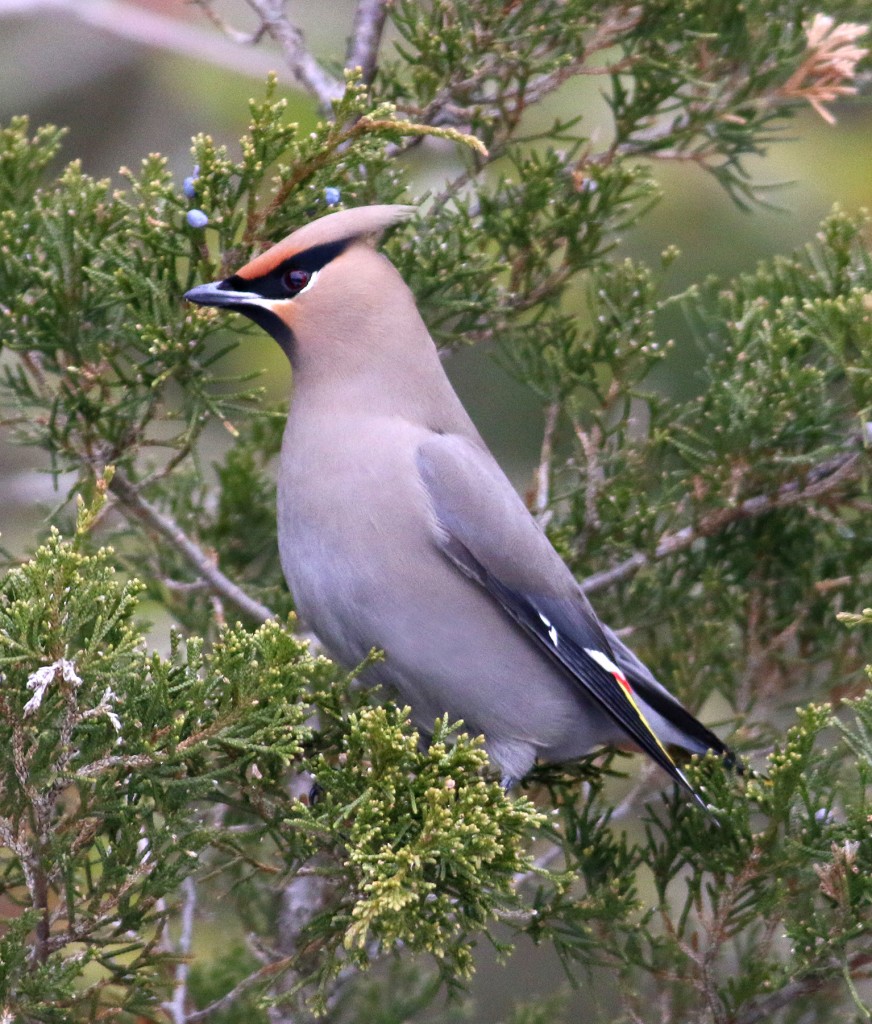
Here’s the photo that I’ve been waiting to get for the past eleven years. Welcome to the collection, Bohemian Waxwing. How would you describe this bird? Elegant? Regal? Either way, its photo bird #1,037.
So the strategy worked, with help from Kevin. Patience and persistence pay off, as they often do. And I finally have a Bohemian Waxwing photo again.



